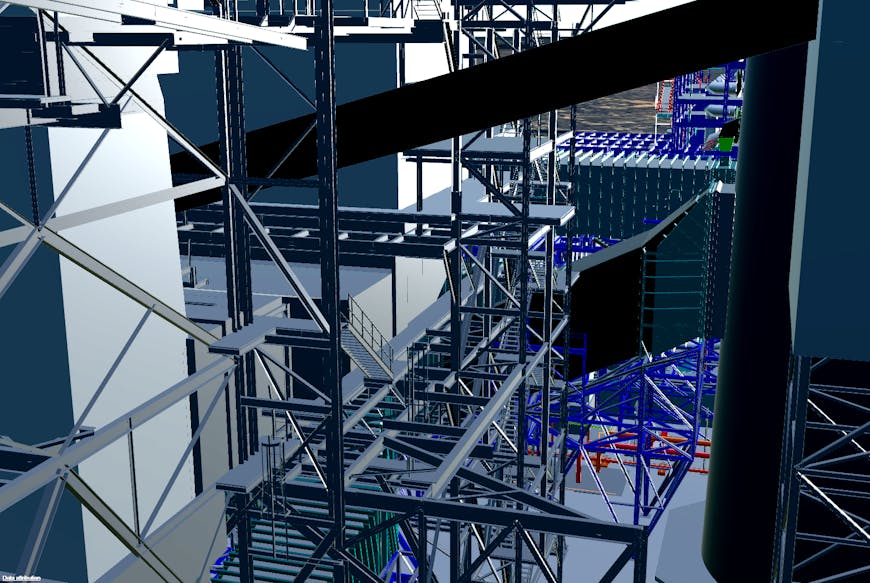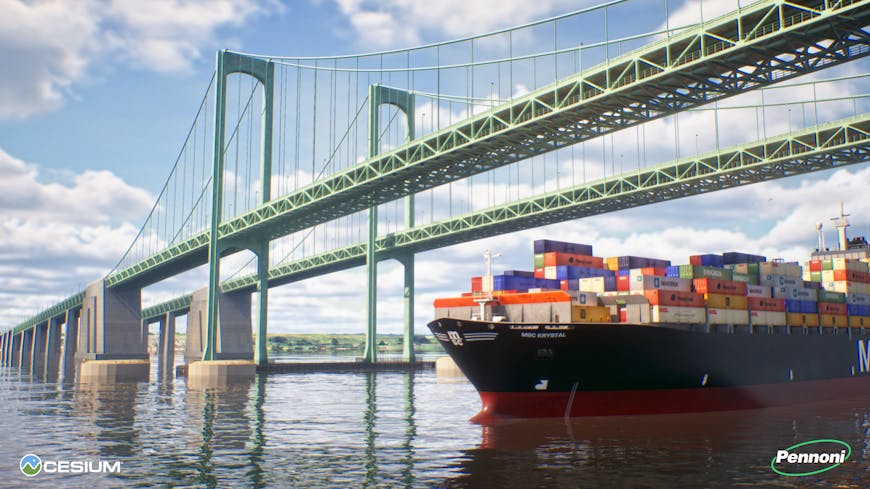AEC and Digital Twins Galore at the Cesium Developer Conference
When we issued the call for proposals for this first Cesium Developer Conference, we were curious how many talks we would receive and what themes would stand out. Cesium has a history in aerospace and now serves a thriving community of open source geospatial users across many different industries, including architecture, engineering, and construction (AEC).
We were happy to see submissions from longtime advocates of CesiumJS, 3D Tiles, and other complementary technologies and topics from the open community—and some surprises. In fact, we received so many abstracts that we expanded the total number of presentations from approximately 50 to 90! There will be a ton for attendees to explore at the event.

Facility BIM in CesiumJS.
AEC and Digital Twins track
The biggest concentration of talks came from AEC and digital twin implementations. We were able to accept 21 full sessions and five lightning talks for the conference from submitted AEC/digital twins abstracts. The sessions are split into three groups, two of which will have to run concurrently, because of the volume. It’s a great “problem” to have.
The topics for this category range from aggregating multiple project sites in a single geospatial experience to providing XR experiences for inspecting and exploring asset conditions in the context of a dynamically updated digital representation of a system. Some presenters will focus on using the rich information in building information modeling (BIM) data in geospatial context, while others will focus on using a 3D map as a communication vehicle.
There will be digital twin projects presented that focus on rail, roadways, buildings, campuses, and whole cities. We anticipate these presentations will drive conversations at the conference networking events about how to bring open geospatial concepts into even more corners of the AEC industry.
Organizations from around the world
A few of the organizations who will present in the AEC and Digital Twins track:
- Arcadis will share how they are using Cesium for Unreal Engine for architectural visualization.
- Holosim will present an exciting story about using immersive gaming technologies and 3D Tiles to plan theme parks.
- Pennoni will demonstrate how their team uses 3D Tiles and Cesium with game engine technologies to visualize future plans.
- EARTHBRAIN will demonstrate how they are digitalizing the construction process, especially around earth moving workflows.
- Mott MacDonald will discuss how they use Cesium for a web-based GIS for AEC.
- CalTa will demonstrate how they create digital twins from reality capture information to help customers manage real-world assets.
- Project Controls Cubed will present on how they are using iTwin and Cesium to modernize water treatment systems.

Proposed “dolphin” cylinder protection at Delaware River and Bay Authority (DRBA)’s Delaware Memorial Bridge. Courtesy Pennoni.
Where can I catch AEC and Digital Twins material at the conference?
Relevant AEC industry content will appear in user-submitted 20-minute sessions, in 5-minute lightning talks on the main stage, and in demonstrations from key customers and product teams from Bentley Systems and Cesium, showing off AEC capabilities that integrate with open geospatial technologies.
Of course, you’ll also be able to meet the speakers and other attendees at the conference’s socials and meals.
Will there be more than AEC and Digital Twins topics?
Yes. There are six tracks, represented in full sessions and lightning talks. Find out more about the themed tracks in our blog and on the conference pages.
Join us for a great event!
Check regularly for more information about talks, speakers, and activities.
We’re excited to bring the community together and see the fantastic work being done across the open ecosystem.